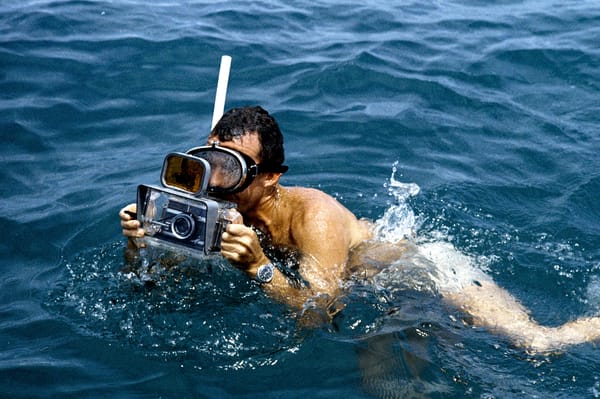HMM WEEKLY for October 1, 2019
From the Makers of HMM DAILY

Another Week, Another Hmm Weekly
GOOD MORNING! This is another transmission of HMM WEEKLY, the successor publication to HMM DAILY, distributed via SUBSTACK, a futuristic newsletter delivery and reading platform. We are currently posting items FREE TO ALL, in gratitude to those of you who previously financially supported HMM DAILY or those of you who merely expressed interest in it. Eventually, as the days shorten and our weekly publication grows longer, we will set about creating additional things that will be viewable exclusively to financial supporters of HMM WEEKLY.
If someone has passed along this message, it’s easy to sign up for yourself.
We urge you to spread the word about HMM WEEKLY, and we thank you for reading.
Note: The Destination Is the Journey Dep’t., our serial travelogue, will return next week, picking up where it left off on the highway west of the World’s Only Corn Palace.
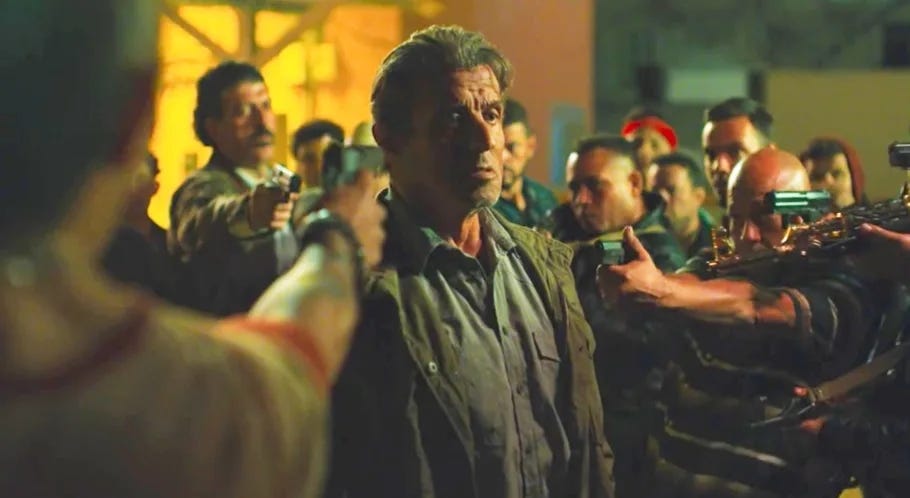
Sylvester Stallone in Rambo: Last Blood
IMMORTAL COMBAT DEP’T.
Rambo: Last Blood, directed by Adrian Grunberg
THE NEXT-TO-LAST thing John Rambo does in the movie First Blood, before he surrenders to the police, is to throw aside the huge machine gun with which he's just shredded the unfriendly small town of Hope, Washington, and break down sobbing. His old commanding officer in the Special Forces, Colonel Sam Trautman, has found him and is trying to tell him it's over. "Nothing is over!" Rambo shouts in anguish. "Nothing! You just don't turn it off!"
You sure don't. Thirty-seven years later, Rambo is on movie screens again, or still. This was not the original concept. In the novel First Blood, and in the early movie scripts, Rambo died in the end—killed in America, or by America, after having made it through Vietnam. Even the ending Sylvester Stallone wanted and got, where he walks out alive, is about defeat: It's 1982, seven years after the fall of Saigon, and the decorated combat hero is a traumatized, homeless drifter, trapped and alone, his skills and training meaningless in a nation done with war.
"Back there," he rages to Trautman, "I could fly a gunship, I could drive a tank. I was in charge of million-dollar equipment. Back here I can't even hold a job parking cars!"
But movies, especially Stallone franchise movies, can't sustain the logic of losing. Who remembers Rocky as an overmatched pug, happy to stay on his feet while losing to a real champion? Three years after turning himself in to the cops and National Guard, Rambo got sprung from prison on a mission to Vietnam, to rescue P.O.W.s and re-fight the war, beating Commies and a faithless American bureaucrat too. Three more years and he was humiliating the Soviet empire in Afghanistan. He shot down a Russian helicopter with a bow and arrow, and even as a teen with lowish taste, I reckoned things had gone full stupid. Two and a half more years, and George H. W. Bush turned loose the full weight of our tanks and gunships and multimillion-dollar equipment against the retreating Iraqi army on the Highway of Death.
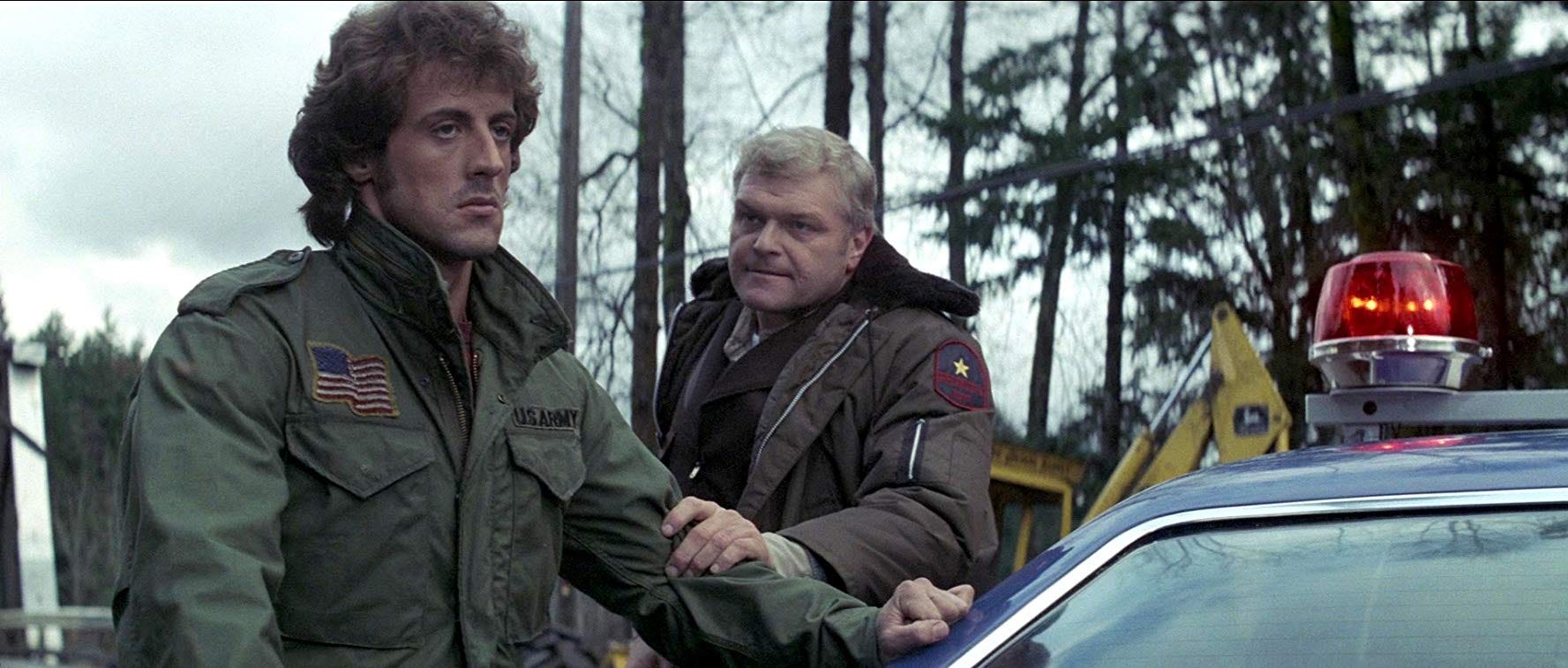
Sylvester Stallone and Brian Dennehy in First Blood (1982)
There were two surprises when I went back and watched First Blood, in preparation for Last Blood. Though I remembered whole passages beat for beat, from watching it on somebody's VCR at age 11 or 12, I had not realized that Rambo had scrupulously, if ridiculously, avoided killing people. Whether he was fighting off his pursuers and tormentors with his razor-edged tactical knife, impaling them on sharpened wooden spikes, or hosing them down with 7.62mm automatic weapon fire, he aimed for non-vital areas.
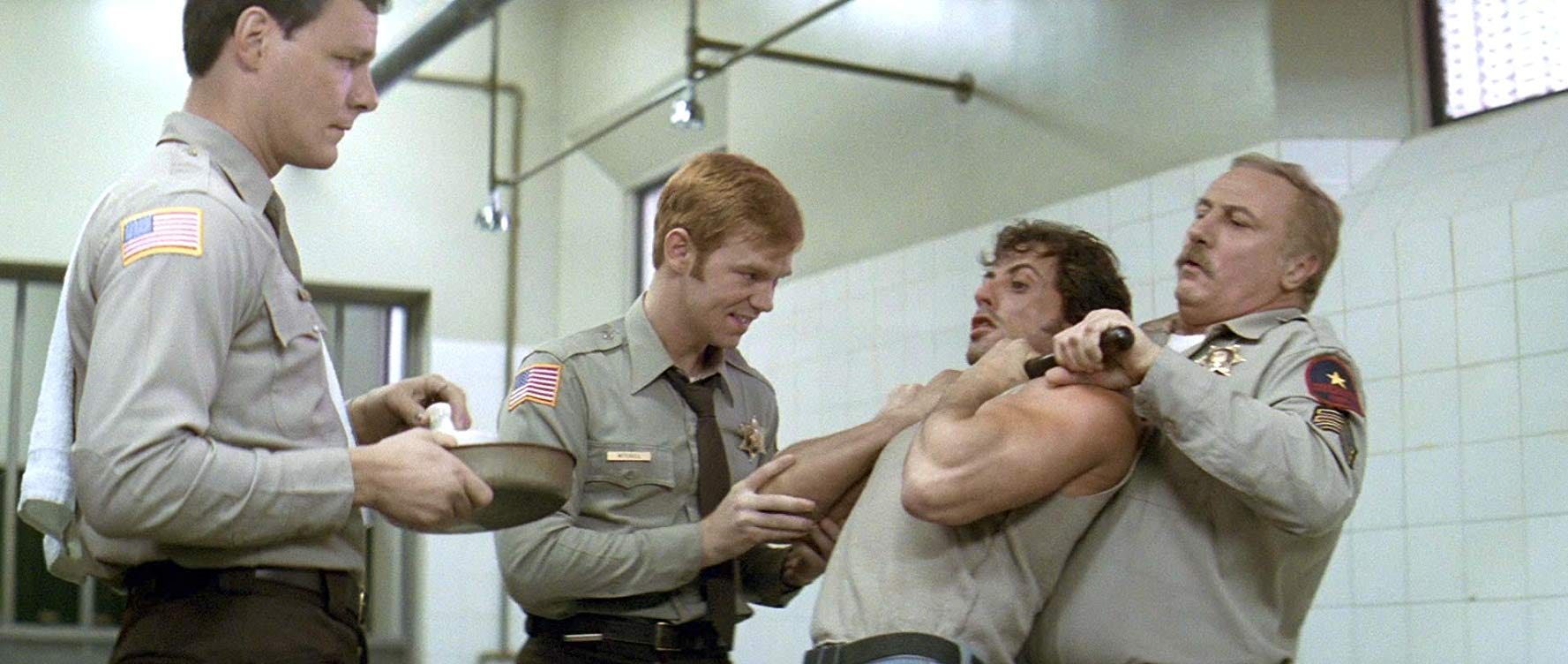
Chris Mulkey, David Caruso, Sylvester Stallone, and Jack Starrett in First Blood (1982)
The other thing that was lost on me back in the '80s was that the cops were not simply undifferentiated heavies. They abuse and pursue Rambo because they've gone wrong, step by step—the mean authoritarian sheriff loses control of the situation to an outright sadistic deputy, and the indifferent or reluctant other deputies are dragged into it. A few bad intentions spiral into worse actions, and by the time the one truly malevolent deputy gets himself killed, the rest of them are committed to a war they didn't want.
But I was not alone in forgetting those parts of the Rambo story. On the evidence of Last Blood, John Rambo has forgotten them, too. The new movie is a blankly schematic revenge fantasy, played out across a "Mexico" and a "United States" outside of any recognizable geography or history, with no purpose but to prepare human meat for vividly choreographed mutilation and slaughter. There are bad guys, and there is a good guy, who spends his days in a bunker he dug into his yard for a hobby and whose life lessons are gravelly muttered absolutes about the irredeemable evil that stalks the world out there. "I know how black a man's heart can be," Rambo says, and says again later in voiceover.
The original First Blood didn't exactly stake out a coherent position on the cultural politics of war, itself. Trautman proudly wisecracks to the sheriffs about what a magnificent warrior he trained, but confesses to them that he and Rambo got "confused" by the things they did: "We had orders. When in doubt, kill." Rambo broods over the old jingoist legend of being spat on by lefty protesters, yet his own troubles in town begin with the sheriff targeting him as a dirtbag longhair unfit to wear an American flag patch on his jacket. He rages about how in Vietnam, "I had all these guys, who were my friends"—but Vietnam is the reason they're all dead. In the end, the contradictions collapse into the unshakable horror of having seen one of them blown to pieces: "My friend that's all over me! I got blood and everything, and I'm tryin' to hold him together!"
That was the lesson of war, when the country could still see the last war as a terrible mistake it had just gotten out of. But what can we do with Rambo, our fighting boy, now that the war came back and it never ends? He left Afghanistan behind when it was still a romantic proxy guerrilla war, before we came back to kill and be killed by the same insurgents we'd backed. He never went to Iraq at all. In the middle of the surge, at the beginning of 2008, the plot summary of the fourth Rambo movie tells me he was in Burma instead, for a bloody humanitarian intervention there, outside the sphere of American guilt or responsibility.
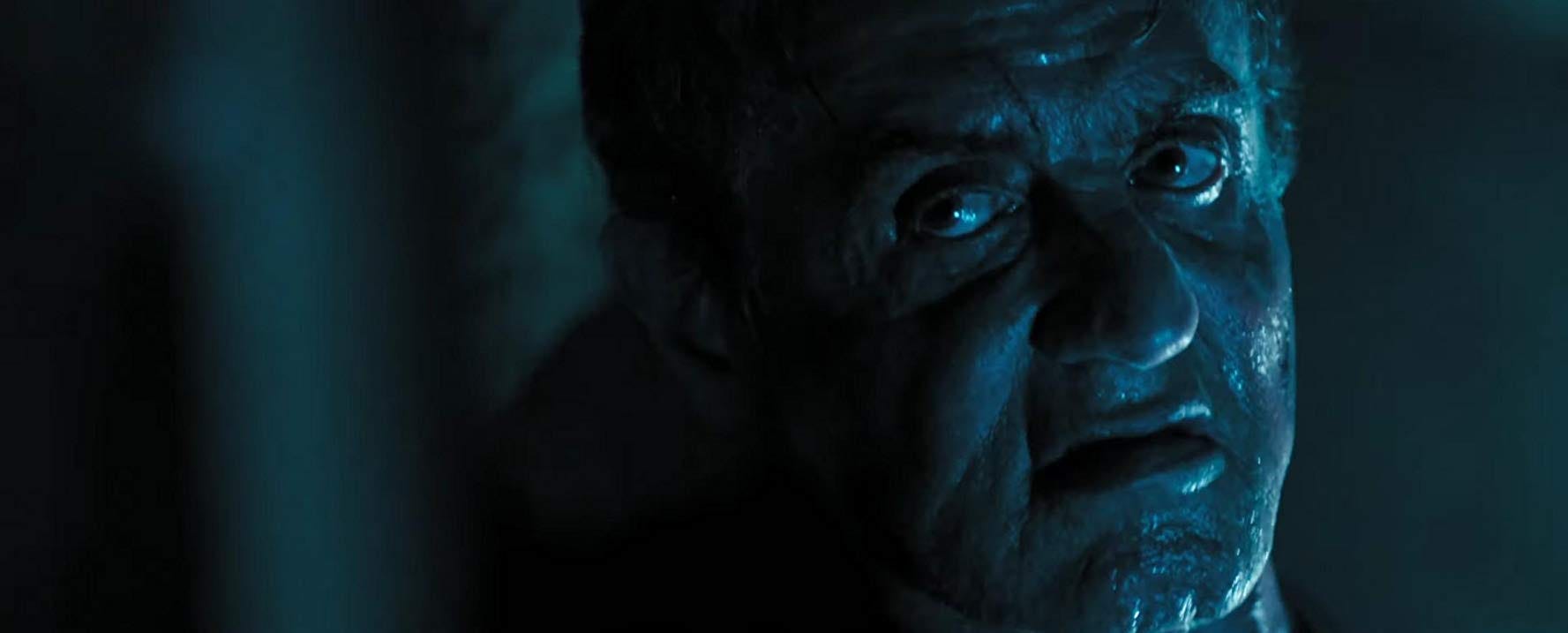
Sylvester Stallone in Rambo: Last Blood
Now Rambo is an old man—Stallone's head, bloated and reshaped by muscle and the demands of aging celebrity, looks less like his pretty young self than a different '80s icon, one of the claymation California Raisins—and the world is too ruined and frightening to think about. It would seem obvious that Rambo versus the Mexicans should be a Trumpist fable, but it's too isolationist even for that. The Mexicans are not invaders; America has nothing they want or need. There is a border fence, low and fragile, but Rambo is the one who breaks it down, speeding north in his pickup truck over roadless land to evade a logical and logistical roadblock to the story. The enemy has to be baited into entering the country, so the combat can be staged under conditions of total control. We know violence is the solution, but no one can even articulate what the problem might be.
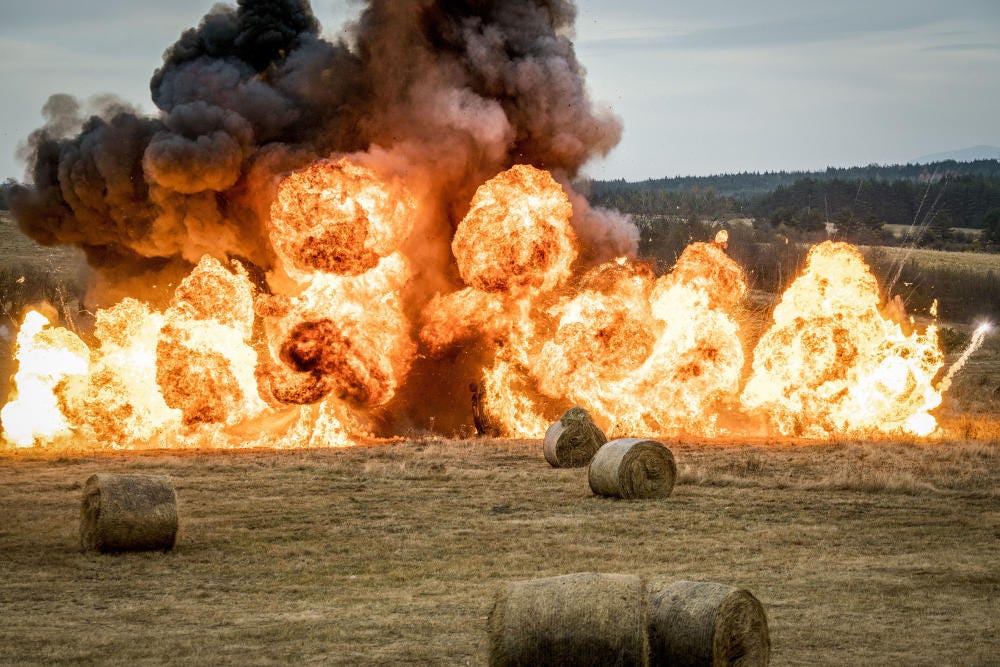
Rambo: Last Blood (2019)
Art Appreciation Dep’t.
An Incomplete Observation of the Art of the 2019 Maryland State Fair.
I VISIT THE Maryland State Fair every year to eat a corn dog, maybe go on a ride, bet on the horse races, take a gander at the fancy chickens and all the different beasts brought in for the 4-H contests, but something I have consistently overlooked through all my years of attendance is the Open Class Home Arts exhibit in the Home Arts building, and next year I intend on devoting a whole afternoon to it, that’s how dense it is, a pop-up museum full of a year’s worth of triumphs in all sorts of disciplines.
I apologize for a lack of attribution and documentation beyond anything visible in the photos - I didn’t think the art would stay with me the way it did and that I would be compelled to comment on it in this space.
Let’s begin with a couple of things I’d fully expect to see on display in a 4-H exhibit.

Wool

Corn
There were baked products, candy, preserved foods, quilts, needlepoint, knitting, tatting, all kinds of skilled crafts. The fine art on display was all over the place thematically, but several of the pieces submitted were vivid, striking, violent, even.

This one hit me first, a fox with a goose; usually I root for the fox because they are on the business end of a fox hunt, and I’m still Team Fox, but this time Mr. or Ms. Fox is in charge, with a nice meal of goose, and the snapped-neck waterfowl is sort of riding on the fox’s back and it makes no sense in terms of Nature, but it works, right? It’s grisly but it’s rendered in a simple style that diminishes the gore and gives it a solid Americana flavor, not to mention goose flavor.
From there I hit this one:
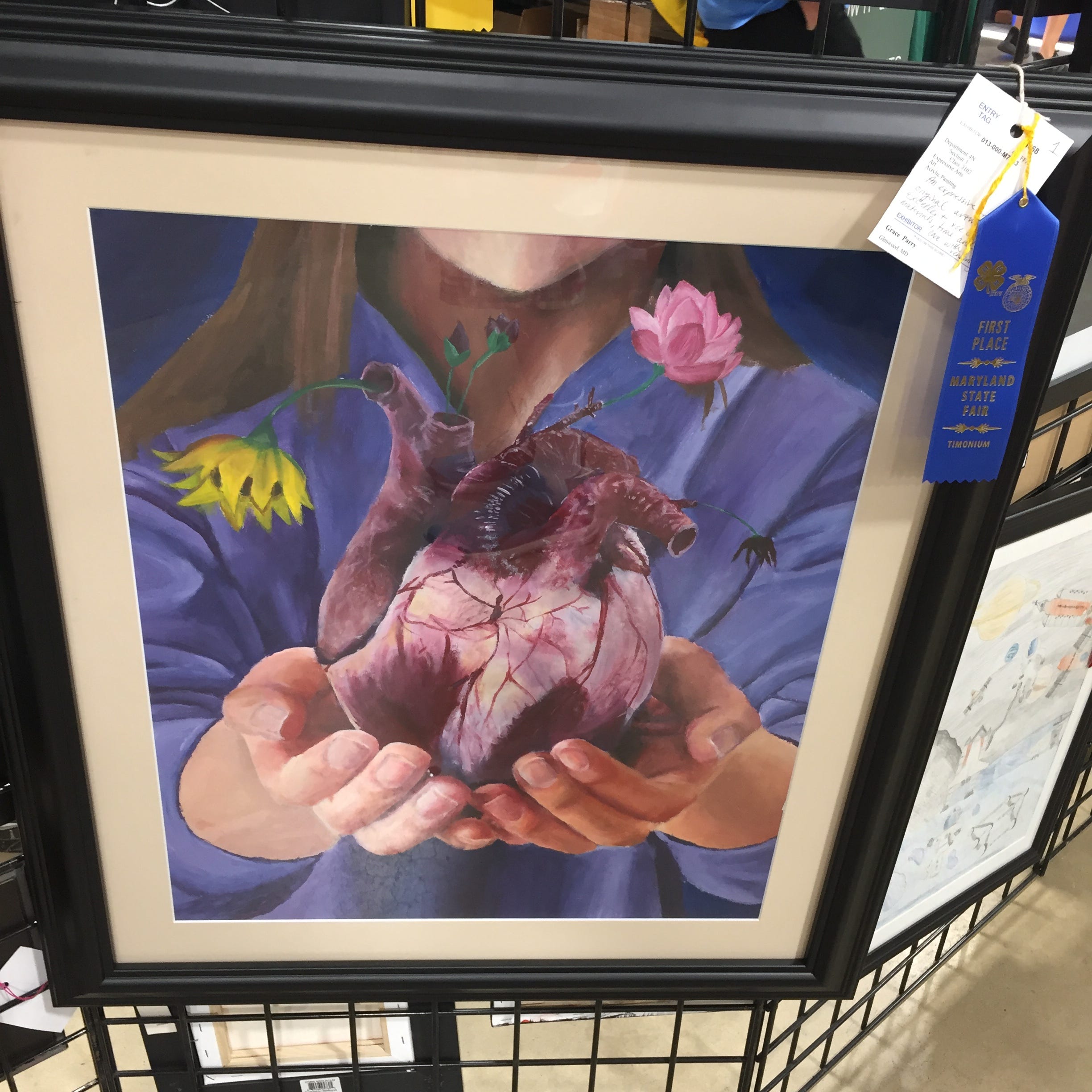
Gadzooks! I was brought up a Catholic, so anytime I see a disembodied heart out in front of somebody, it’s no big deal, because usually it’s Jesus or Mary showing it to me to remind me they love me and died for me and stuff, but this piece tapped into my religious conditioning and then freaked me out with technical detail, done in a realistic manner, plus some metaphorical flowers growing outta the organ on offer. The work makes me ask questions; who is holding the heart? Why? It seems like everything is OK, but there’s a heart!
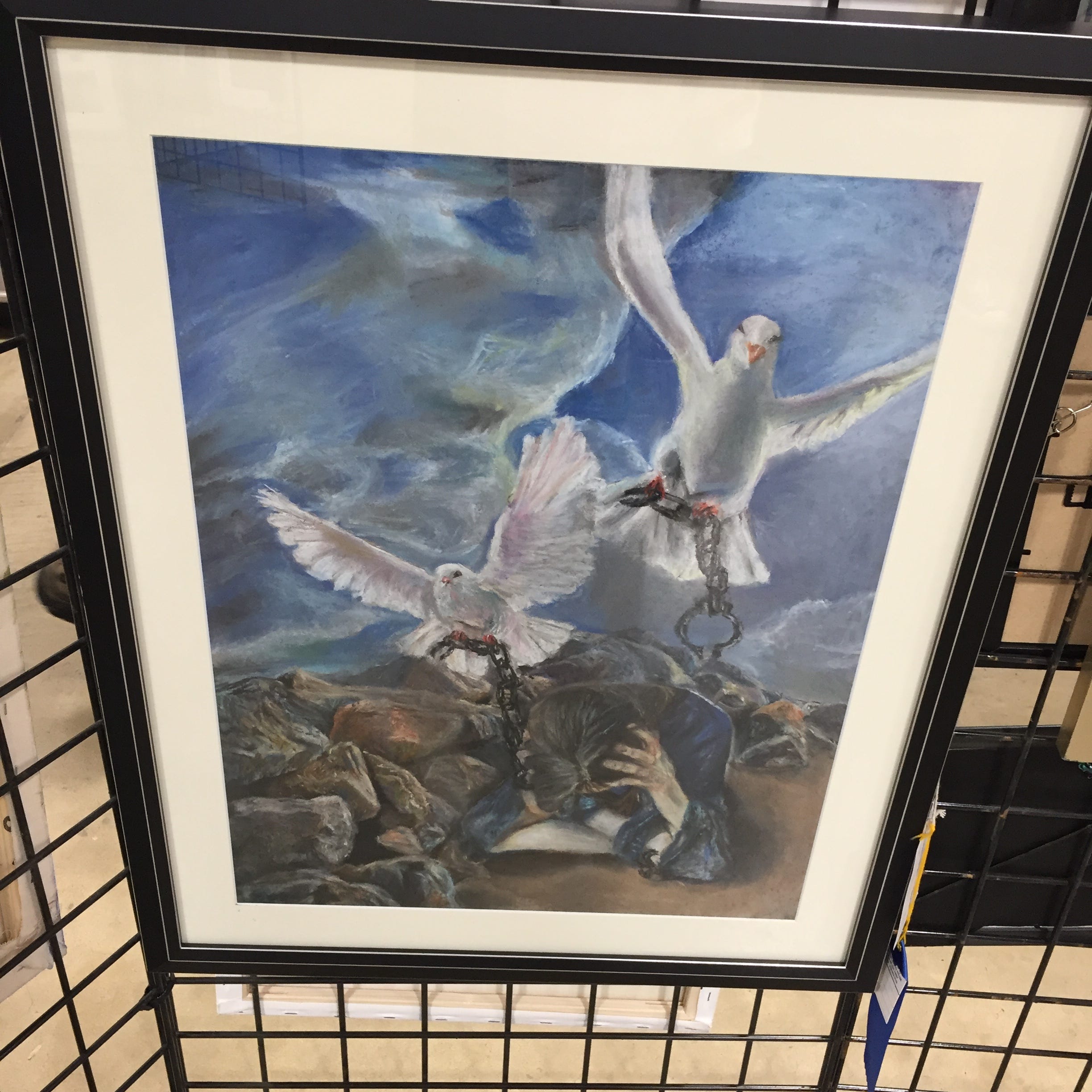
Doves are another thing a lot of us have imprinted on our brains as symbols of peace or freedom, or the Holy Spirit, and these doves appear to be releasing a suffering soul from some sort of bondage, but the image is, for me, energetically violent. Are you noticing the prize ribbons in the photos? It appears we have some Blue Ribbons, so I feel good that the judges were on track with my opinions!
OK, here’s the one that took the whole show for me in terms of emotion and energy:

Yowza! I’m not going to take the artist to task for rendering or draftpersonship, there are lots of things to pick on with this image technically, but then they all are negated by the almost Cubist effect overall. Plus, who’s that behind them? This one I can safely say, is Religiously inspired.
Now, the real mind-blower of the event for me. I have full info on it because I put the image on my Twitter:
420 TWEETZ: MARIAN SACHS AGE 92 FROM YORK COUNTY PA TAKES THE PRESIDENT'S AWARD AT THE MARYLAND STATE FAIR WITH THIS MIND-ROASTING IMAGE OF AN ANIMAL MADE OUT OF OTHER ANIMALS
— JOE MACLEOD (@JOEMACLEOD666) 2:07 AM ∙ Sep 4, 2019
It’s something like 20 animals! Absolutely outstanding. Ms. Sachs is 92 years old!
Here’s a detail of the image so you can maybe see all the animals better:

Crazy, eh? Here’s one more, an image that I missed, put up by someone else on Twitter. I will study the needlepoint more carefully next year.
@JOEMACLEOD666 This Silence of the Lambs needlepoint was also a personal favorite.
— Geoff Shannon (@Geoff_Shannon) 2:28 PM ∙ Sep 26, 2019
VISUAL CONSCIOUSNESS DEP’T.
Flowers encountered along the way

YOU CAN FOLLOW hmmweeklygram on Instagram.
VOLUNTEER APPRECIATION DEP’T.
WE ALWAYS MAKE big plans about what we’re gonna plant in the yard every Spring, and how we’re gonna plant stuff in the pots on the deck, but talk is cheap.
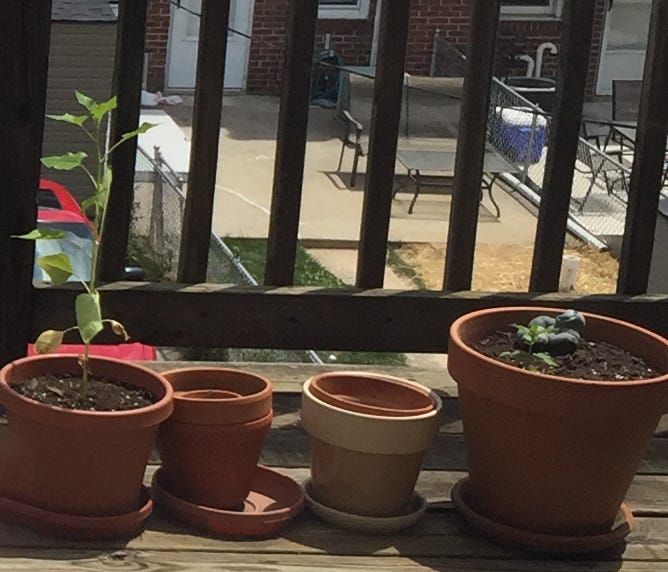
The timestamp on the above photo is June 29, and there’s a spindly little thing growing in that one pot on the left. We didn’t plant it, we thought it was a weed, but we figured at least there’d be something growing in the pot until we planted something, eh?

So that thing bloomed, and then, I mean, I’m no botanist, but of course it was officially a FLOWER, so no way was it getting evicted from that pot. I can’t tell you how much that first simple little bloom made us smile. The seed of something beautiful just ended up in that pot, sprouted a cute little flower, and then it blew our minds because it sprouted a dozen more flowers and lived with us all summer.
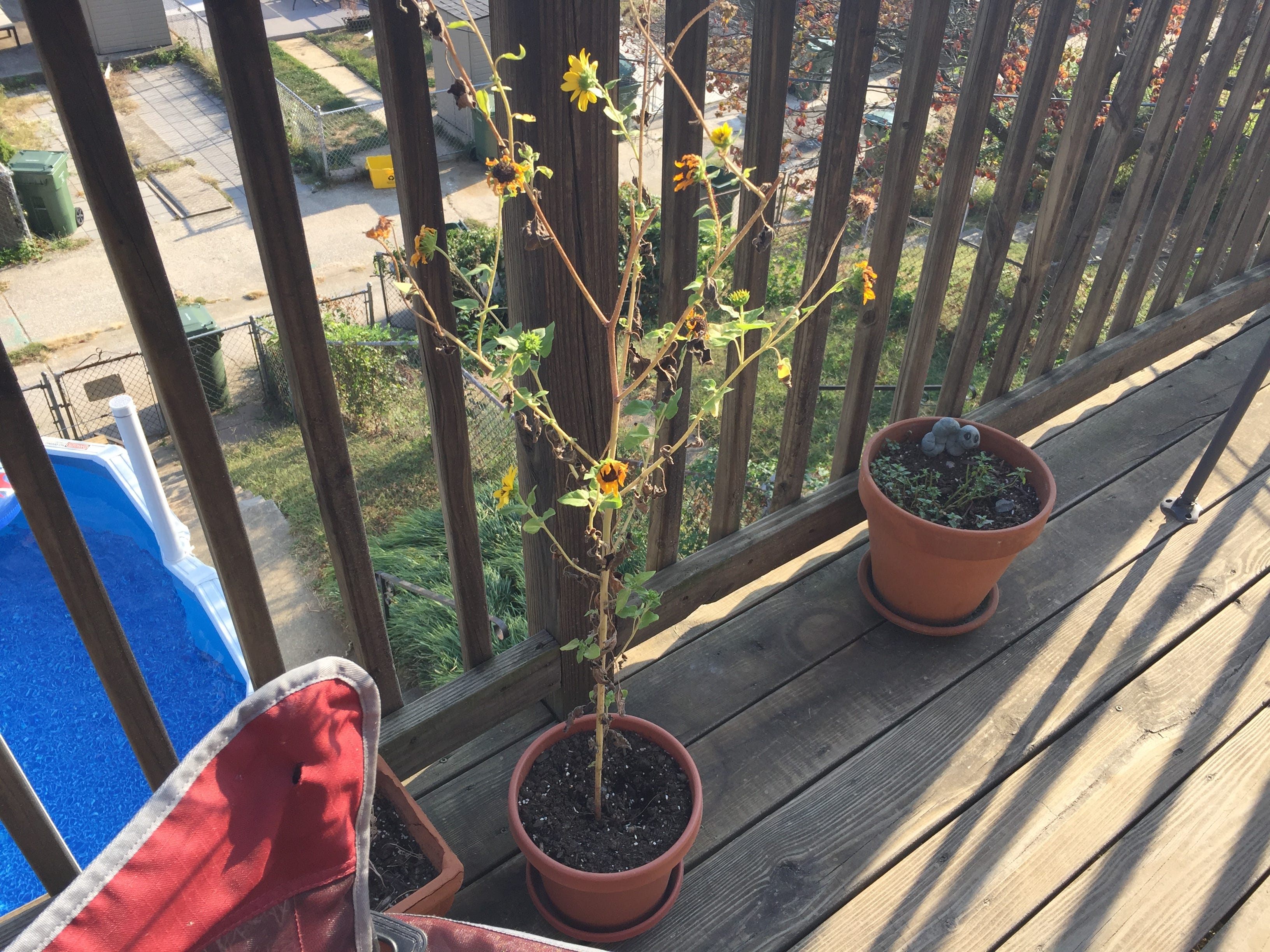
It’s October and it’s looking a little rough now, but look at all the blooms that thing gave us! I might try and bring it inside and see if I can revive it, but I’ll definitely get some seeds out of it and plant them in a pot next Spring, sure I will.
RECIPES DEP’T.

WE PRESENT A selection of recipes for anachronistic but entirely executable sandwiches, found in The Up-To-Date Sandwich Book: 400 Ways to Make a Sandwich, by Eva Green Fuller; 1909; McClurg and co, Chicago, now in the public domain for the delectation of all.
TOMATO SANDWICH NO. 2
On thin slices of lightly buttered white bread place a crisp lettuce leaf that has been dipped in mayonnaise dressing; on this, place thin slices of tomato, add a dash of salt, and spread lightly with mayonnaise dressing; cover with another lightly buttered slice of bread.
HOT HAM SANDWICH NO. 2
Spread finely minced boiled ham on thin slices of lightly buttered bread. Put the sandwiches together and cut into triangles. Beat two eggs light, add a cup of milk and a pinch of salt. Dip the sandwiches in the egg and milk and fry brown on a hot buttered griddle. Garnish with a slice of broiled tomato and serve at once.
ASPIC JELLY SANDWICH
Soak one box (two ounces) of gelatine in one cup of chicken liquor until softened; add three cupfuls of chicken stock seasoned with a little parsley, celery, three cloves, a blade of mace, and dash of salt and pepper. Strain into a dish and add a little shredded breast of chicken; set in a cold place to harden; when cold, slice in fancy shapes and place on slightly buttered whole wheat bread. Garnish with a stick of celery.
FRENCH ROLL SANDWICH
French rolls are used for this sandwich. Make a small round opening in top of each and take out some of the crumbs; save the small crusts from the top of the opening; chop fine five olives, a tablespoonful of capers, one green sweet pepper (seeds removed), one gherkin, the white meat of one chicken, and two ounces of tongue chopped fine. Moisten with mayonnaise dressing. Fill this mixture into the roll, put the small crust on top, and garnish with a pickle.
If you make any of these sandwiches, kindly send a picture to hmmweekly@substack.com.
HMM WEEKLY IS written by Tom Scocca, editor, and Joe MacLeod, creative director. If you enjoy Hmm Weekly, let a friend know about it, and if you're reading this because someone forwarded it to you, go ahead and sign up for a copy of your own right now. Thanks for reading.


